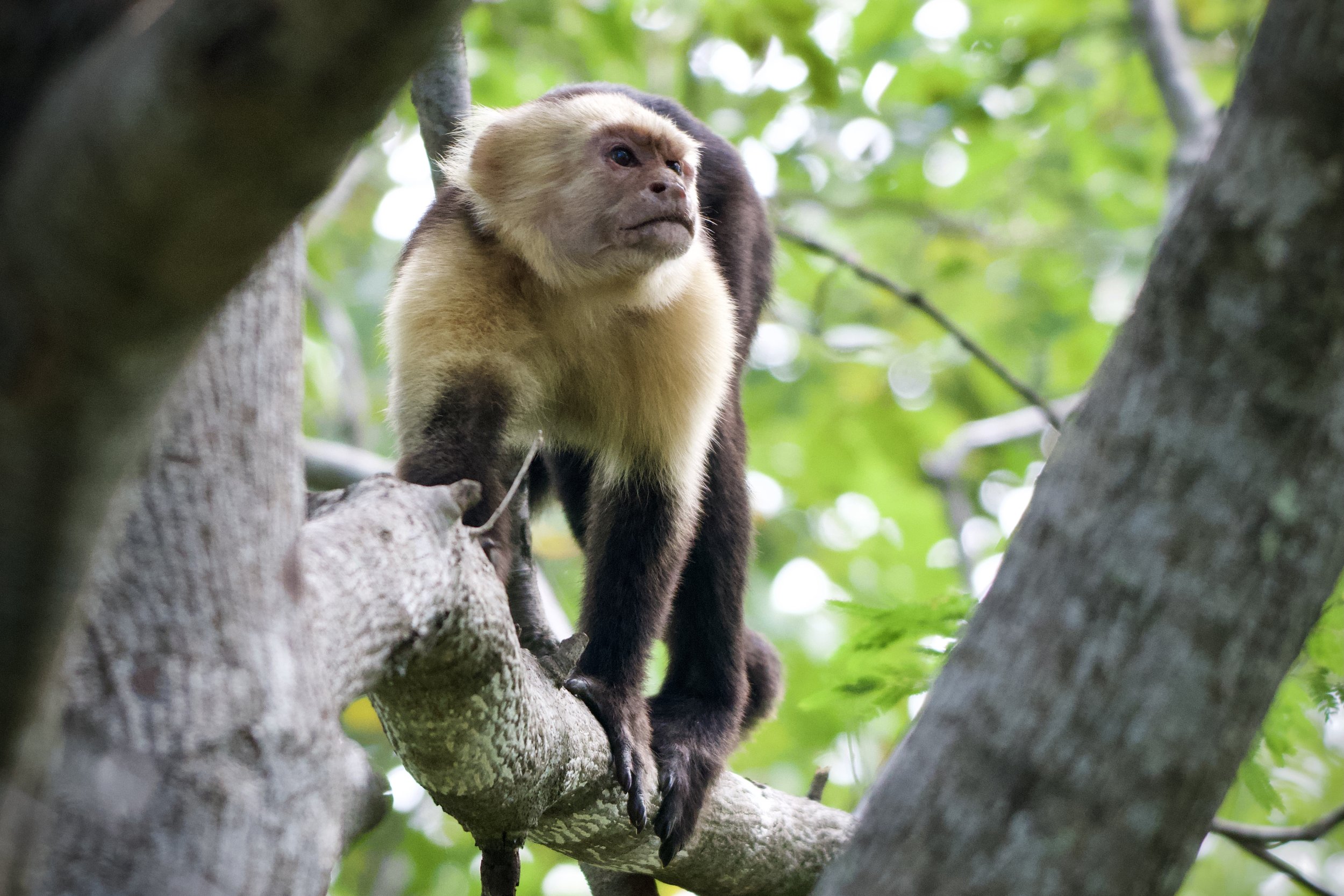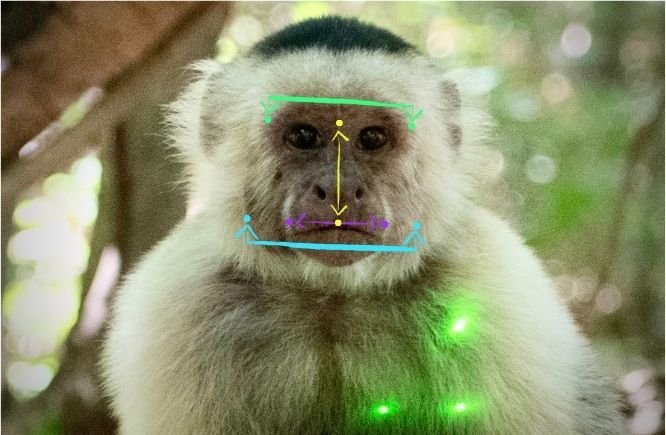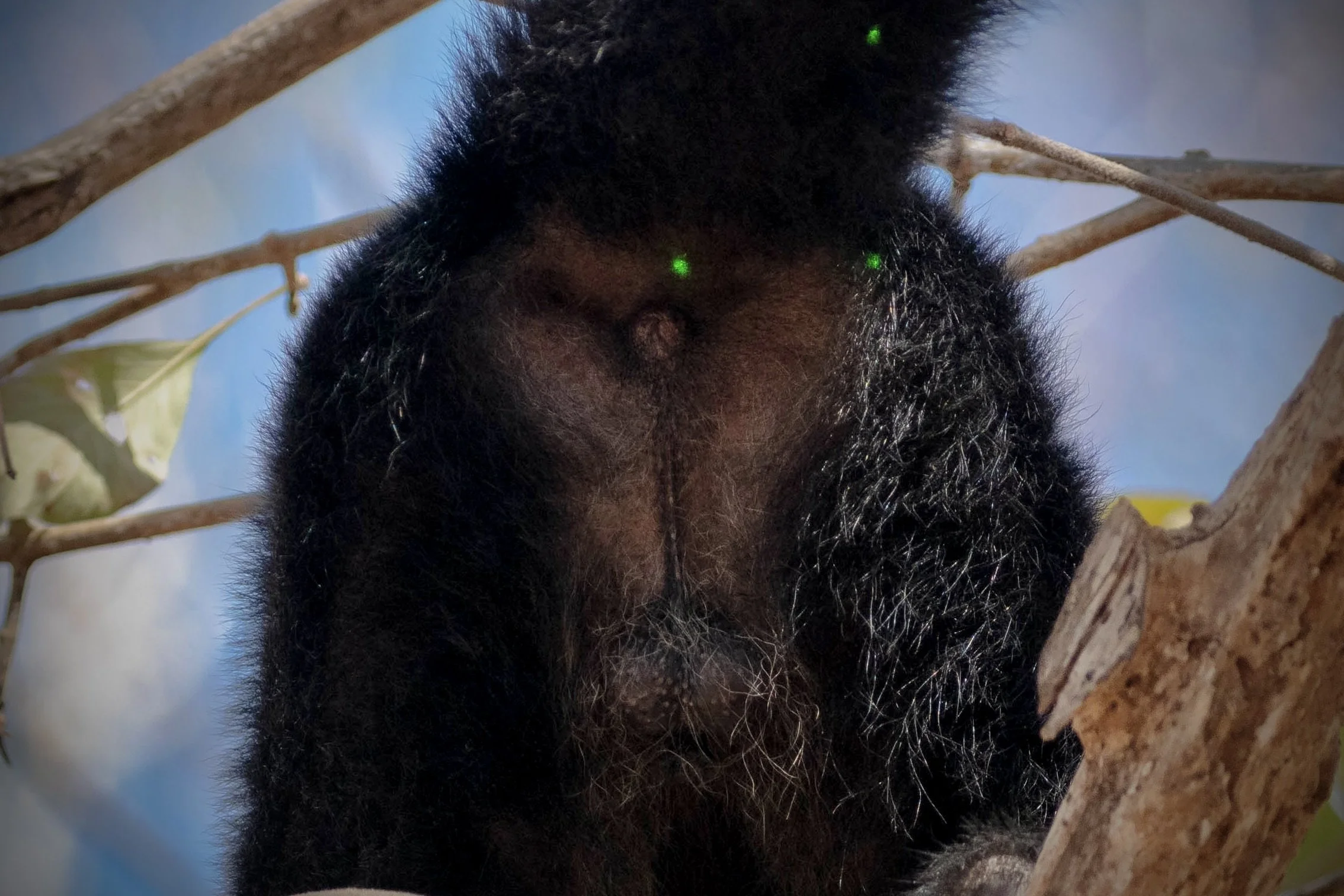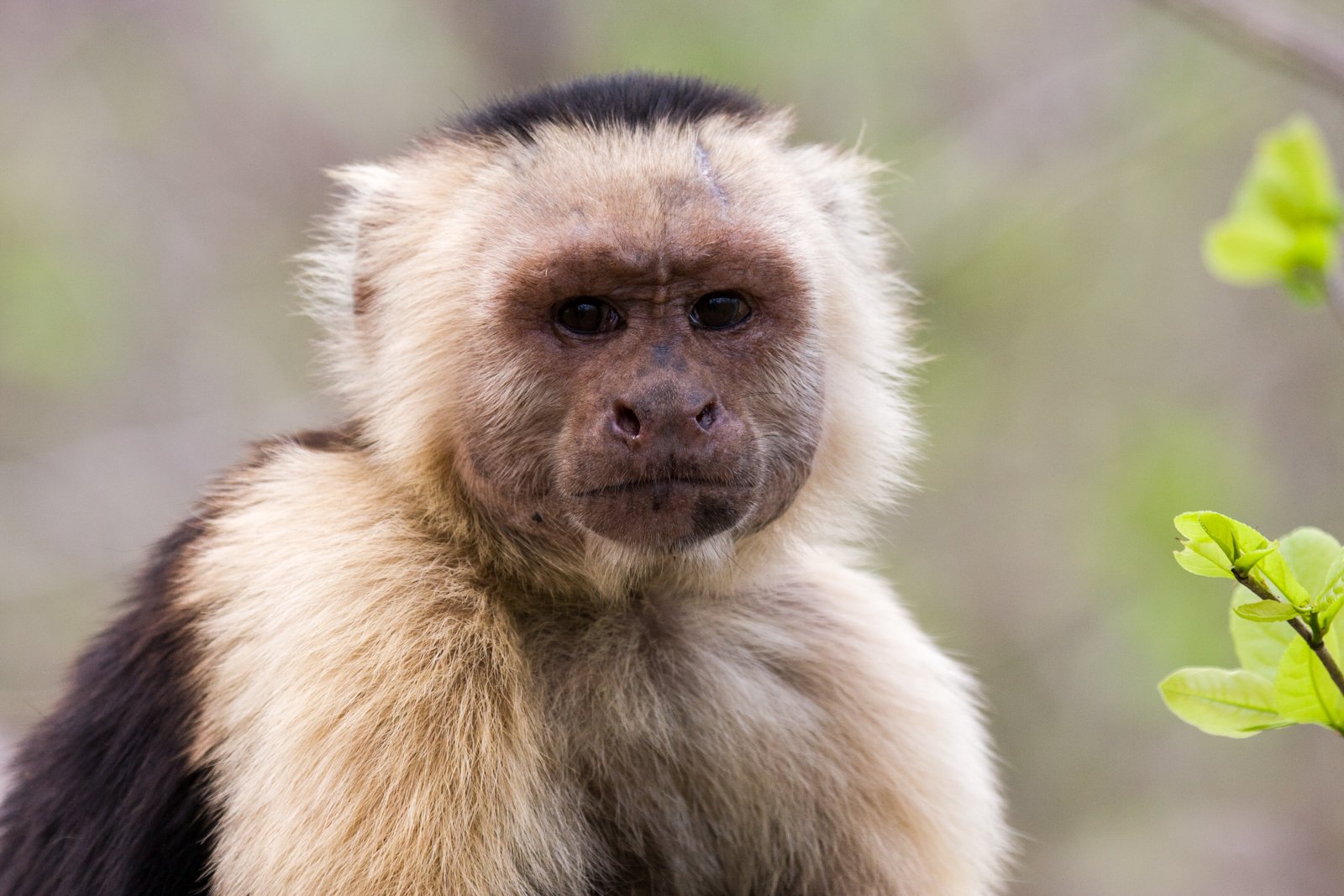
Research
The Scent of an Alpha Male: The Role of Urinary Volatiles in Male Dimorphism of Capuchins
Principal Investigators: Dr. Katharine Jack and Dr. Amanda Melin (with Dr. Anja Widdig, PI, and Dr. Jacinta Beehner, Co-I)
Funded by the National Science Foundation (NSF BCS-2051573).
The existence of two physically and behaviorally distinct types of males in a single species is extremely rare in mammals but has now been documented in a number of primates. In species that display these alternative male morphologies, the larger, socially dominant, alpha male morph has higher testosterone and sires more offspring than the smaller subordinate male morph. This project investigates a potential role of olfactory communication in the development and maintenance of alternative male morphologies in a species of wild primate. The study’s integrative approach measures variation among males and advance a comprehensive understanding of this phenomenon while providing insight into the importance of olfactory communication in the biology and behavior of wild primates. Through this longitudinal and cross-sectional study, we are integrating methods from behavioral ecology with non-invasive measures of endocrinology, morphology, and chemical ecology to quantify and investigate the potential role of olfactory signaling in enforcing male rank. This research has also been supported by multiple grants from Tulane’s Stone Center for Latin American Studies and the School of Liberal Arts Faculty Research Fund.
Photogrammetric analysis of body length, facial features, and testicle size. Photos by Nick Chapoy.
Variation in the pace of aging in white-faced capuchins
Principal Investigator: Dr. Fernando Campos, Dr. Amanda Melin, and Dr. Katharine Jack
Co-Investigators: Dr. Michael Gurven, Dr. James Higham
Collaborators: Dr. Joe Orkin, Dr. Eva Wikberg, Dr. Yeonjoo Park
Consultant: Dr. Noah Synder-Mackler
Funded by a grant from the National Institute on Aging at the National Institutes of Health (1R61AG078529-01).
Chronological age is a strong predictor of health and lifespan, but the pace of biological aging varies greatly between individuals. Some retain good health into advanced ages, while others experience age-related disease onset while relatively young. Much variation in the progression of human aging processes remains poorly explained, but a growing body of literature highlights the contributions of both the social and physical environment. Studies of human health and pace of aging are limited by the difficulty of collecting detailed within-subject longitudinal data on lived experience and health outcomes. Studies of humans also have numerous confounds, including individual variation in lifestyle, early-life experience, and access to health care. Studies of wild nonhuman primates can provide invaluable insights into how social and physical environmental factors influence natural aging processes and the human healthspan.
In this project, we are leveraging our established long-term study of wild, white-faced capuchins (Cebus imitator) to improve our understanding of how social and physical environmental factors contribute to heterogeneity in rates of aging and health disparities. We are developing new techniques for non-invasive, population-level sampling of wild animals to identify and study hallmarks of aging across behavioral, physiological, and molecular domains. The study of capuchin physical health in situ, when combined with our detailed dataset of lifetime social and environmental experiences, will allow us to holistically assess the impact of lived and intergenerational experiences on health outcomes and the pace of aging across individuals.
At close to 30 years old, Legolas was one of our population’s oldest individuals before his recent disappearance. Photo by Nick Chapoy.
Making an alpha male: the behavior, endocrinology, and genetics of dominance in male white-faced capuchins
My ongoing research in Santa Rosa focuses on behavioral, endocrinological, and genetic correlates (including kinship, reproductive success, and the major histocompatibility complex [MHC]) of male life history and reproductive strategies. The main goal of this longitudinal project is to understand how hormonal and social factors influence the emergence, from puberty into adulthood, of dominance status in male white-faced capuchins (e.g. Jack et al., 2014). With funding from the Leakey Foundation, Nacey Maggioncalda Foundation, and the National Geographic Society, my collaborators Stacey Tecot (Univerity of Arizona), Eva Wikberg (University of Texas, San Antonio) and I analyzing behavioral data and hormone samples from male capuchins residing in five study groups (2007-2019). Identifying traits and processes influencing individual variability in reproductive success is fundamental to understanding evolutionary processes. In our capuchins, like many other socially living mammals including humans, there is a strong association between dominance status and reproductive success, however we still know very little about how and why some males attain alpha status while others do not. These data, along with our ongoing studies of the role of the major histocompatibility in male dispersal and mate choice decisions (funded by the LA Board of Regents, with Jessica Lynch Alfaro), will provide us with a holistic picture for examining male dominance and reproductive biology. This research has also been supported by multiple grants from Tulane’s Stone Center for Latin American Studies, Newcomb Institute, Lurcy Fund, Committee on Research, and the Lavin Bernick fund for Faculty Research.
Legolas (1994 - 2022) was an alpha male in our CP study group 2007 - 2018. During his impressive 11 year tenure as alpha he sired >20 offspring. Photo by Fernando Campos)
The effects of forest protection, forest regeneration, and climate change on primate populations
Another one of my major projects in Santa Rosa involves an on-going examination of the long-term population trends of the capuchin and howler monkeys (e.g. Fedigan and Jack, 2012). The Santa Rosa team has been conducting park-wide censuses of these two primates since the project began in 1983. Several interesting trends have emerged from our analyses of these long-term data, least of which is that if forest is protected and allowed to regenerate primate populations will return and thrive! To this end, we have documented that the population size more than doubled for both capuchin and howler monkeys between 1983 and 1999 (from <300 to > 600 individuals). However, between 1999 and 2007, the howler population experienced zero population growth, likely having reached the carrying capacity of the environment with regards to the state of forest regeneration. This population plateau was followed by an abrupt crash to ~300 howlers between the 2007 and 2011 censuses. We are currently exploring a variety of explanations for this dramatic decline (e.g. climate change and pesticide use), which was sustained in the 2013 and 2015 censuses. This research has been supported by multiple grants from Tulane’s Stone Center for Latin American Studies and the Lurcy fund.
Santa Rosa National Park at the end of the dry season. Photo taken by K. Jack in April 2015.






